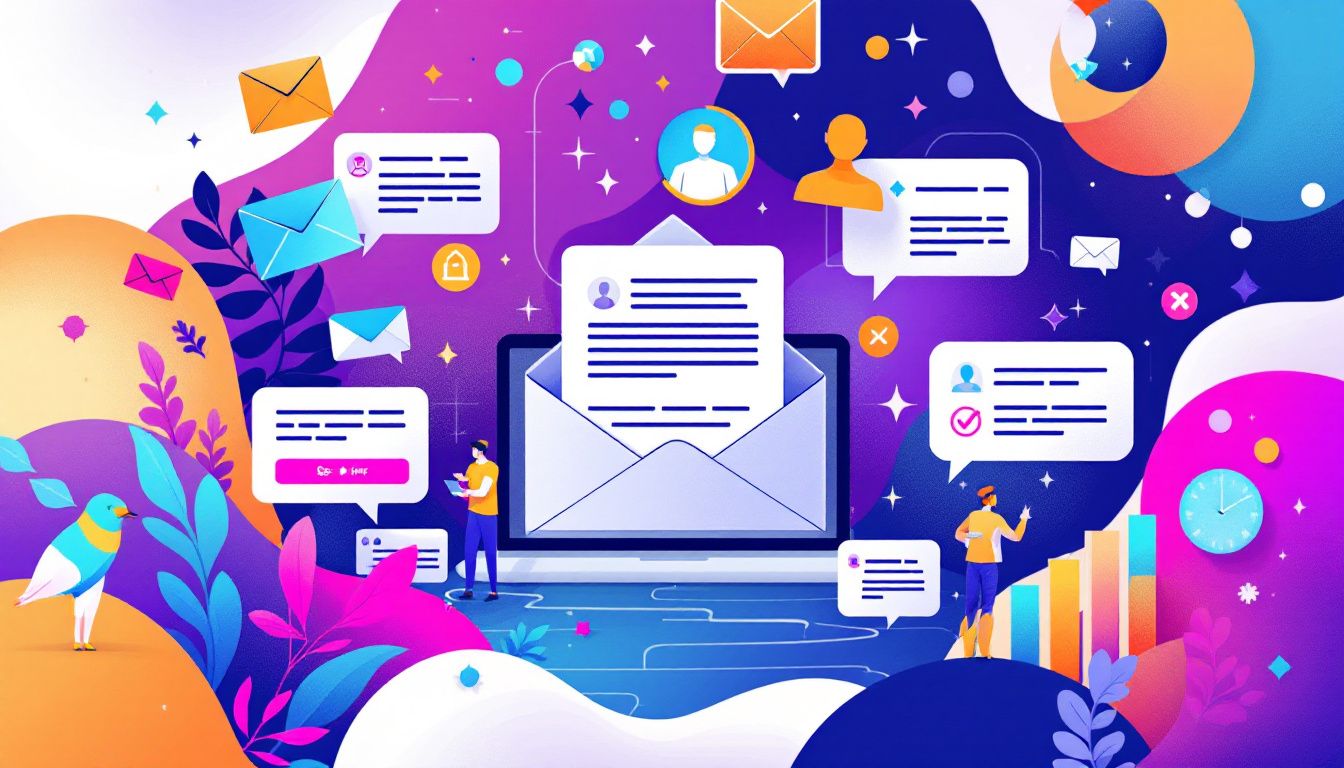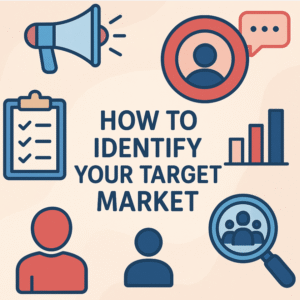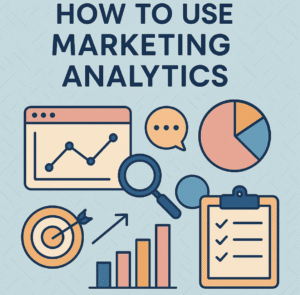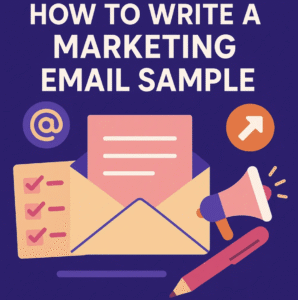
Marketing emails remain one of the most effective tools for driving engagement and conversions. Email marketing outperforms many other channels with an average ROI of $36 for every dollar spent. In fact, 60% of consumers have made purchases influenced by a marketing email. 😳 These numbers highlight the immense potential of this strategy when executed correctly. To achieve success, craft emails that resonate with your audience.
Understanding their pain points and desires allows you to create personal and relevant messages. Tailored content boosts engagement and strengthens trust, making your emails more impactful. If you’re wondering how to write marketing emails that deliver results, the key lies in personalization, clarity, and a strong call to action.
Focusing on these elements allows you to transform your emails into powerful tools that drive meaningful connections and conversions.
Preparing for Effective Email Marketing
Understand Your Audience
Segment your audience based on demographics, behavior, or preferences.
Effective email marketing starts with understanding who you’re speaking to. Audience segmentation allows you to tailor your messages for maximum impact. Use email segmentation best practices to divide your audience into meaningful groups.
-
Demographic Segmentation: Group subscribers by age, gender, or income.
-
Geographic Segmentation: Send location-specific offers or updates.
-
Behavioral Segmentation: Target based on purchase history or browsing behavior.
-
Email Engagement Level: Focus on active subscribers or re-engage inactive ones.
-
Sales Funnel Position: Deliver content suited to where they are in their journey.
These strategies ensure your marketing email feels relevant and personal, increasing the likelihood of engagement.
Create buyer personas to identify needs and pain points.
To craft emails that resonate, you need to step into your audience’s shoes. Buyer personas help you understand their challenges, goals, and preferences. For example, if your audience includes busy professionals, highlight time-saving solutions in your emails.
Personas guide your email strategy, ensuring every message speaks directly to your audience’s needs.
Define Your Goals
Clarify whether your goal is to inform, sell, or nurture leads.
Every marketing email should have a clear purpose. Are you introducing a new product, driving sales, or building trust? For instance, sales-focused emails might include limited-time offers, while nurturing emails could share helpful tips or resources.
Define your goal to ensure your message stays focused and effective.
Align email goals with your overall marketing strategy.
Your email marketing efforts should complement your broader marketing objectives. If your goal is brand awareness, use emails to showcase your values and unique offerings. For revenue growth, focus on promotions and upselling. Consistency between your email strategy and overall goals creates a cohesive experience for your audience.
Research Competitors and Trends
Analyze successful email campaigns in your industry.
Learning from others can inspire your own campaigns. For example, Starbucks uses animated promotions to engage its audience, while fintech companies like Robinhood re-engage users with friendly, visually appealing updates.
Study what works in your industry and adapt those ideas to fit your brand.
|
Industry |
Campaign Type |
Key Features |
|---|---|---|
|
Coffee |
Promotion |
Uses animation to stand out, and emphasizes exclusivity for Starbucks Rewards members. |
|
Fintech |
Re-Engagement |
Highlights recent app changes, friendly tone, and engaging graphics to entice users back. |
|
Tea |
Customer Delight |
Personalized content, friendly copy, and relatable tone create a non-pushy promotional campaign. |
|
Marketing Tools |
Promotion |
Interactive elements like swiping to reveal content, clear messaging, and engaging design. |
Identify opportunities to differentiate your emails.
Standing out in crowded inboxes requires creativity. Leverage trends like hyper-personalization or interactive emails to capture attention. For example, use AI to tailor content or include polls to engage readers. Differentiation ensures your emails don’t just get opened—they get remembered.
How to Write Marketing Emails That Engage
Craft Attention-Grabbing Subject Lines
Keep subject lines short, clear, and intriguing.
The email subject line is the first thing your audience notices. It determines whether your email gets opened or ignored. Short and clear subject lines work best because they grab attention quickly. For example, “Exclusive Offer Inside” or “Your Weekend Plans Await” sparks curiosity without overwhelming the reader.
Catchy subject lines can significantly improve open rates, making them a critical part of your email marketing strategy.
Use personalization and urgency to boost open rates.
Personalized subject lines make your emails feel tailored. Including the recipient’s name or referencing their interests can create a sense of connection. For instance, “John, Don’t Miss This Deal” feels more engaging than a generic line. Adding urgency, like “Last Chance to Save 50%,” motivates readers to act immediately.
Personalized emails with urgency often see higher open rates and click-through rates, driving better results.
Personalize Your Content
Address recipients by name and tailor content to their interests.
Personalization goes beyond just using a name. Align your content with what your audience cares about. For example, if someone recently browsed fitness gear, send them an email featuring workout essentials. Personalized emails have a 14% higher click-through rate and a 50% higher open rate.
This approach captures attention and motivates readers to engage with your message.
Use dynamic content to cater to different audience segments.
Dynamic content allows you to deliver highly relevant emails to various audience segments. Brands like Netflix and Spotify excel at this by offering personalized recommendations based on user behavior. Similarly, you can use weather-based product suggestions or abandoned cart reminders to make your emails more engaging. Tailoring content to specific segments ensures your marketing email resonates with every recipient.
Write Clear and Engaging Copy
Focus on benefits rather than features to appeal to readers.
Your audience wants to know how your product or service will improve their lives. Instead of listing features, highlight the benefits. For instance, instead of saying, “Our blender has a 1200-watt motor,” emphasize, “Make smoothies in seconds with our powerful blender.” This approach connects emotionally with readers, making your email more persuasive.
Use a conversational tone and avoid technical jargon.
Write as if you’re speaking directly to your audience. A conversational tone adds personality to your email, making it more relatable. Avoid using complex terms that might confuse readers. Instead, keep your language simple and engaging. For example, “Ready to transform your mornings?” feels more inviting than “Optimize your daily routine with our product.” Clear, friendly copy encourages readers to take action.
Include a Strong Call-to-Action (CTA)
Make your CTA specific, action-oriented, and easy to click.
A strong call to action is the driving force behind any successful marketing email. It tells your audience exactly what to do next. To make your CTA effective, focus on clarity and action. Use direct language that leaves no room for confusion.
For example, phrases like “Shop now” or “Claim your coupon” guide readers toward a specific goal.
Keep your CTA concise and impactful. Avoid long sentences or vague instructions. Instead, use action verbs that inspire immediate action. For instance, “Discover how” or “Learn more” encourages curiosity, while “Buy now for 20% off” creates urgency.
These phrases not only grab attention but also motivate readers to take the next step.
Position your CTA prominently within the email. Whether it’s at the end of a paragraph or in a standalone section, ensure it stands out. Use bold text or contrasting colors to make it visually distinct. A clear and compelling CTA can significantly boost conversions, turning casual readers into loyal customers.
Use buttons or links to guide readers toward the desired action.
Buttons and links are essential tools for driving engagement. They make it easy for readers to act on your call to action. A well-designed button, such as “Yes, I’m interested” or “Free? Sign me up!”, creates a sense of excitement and urgency.
Use buttons sparingly but strategically to avoid overwhelming your audience.
Ensure your buttons are mobile-friendly. Many readers access emails on their phones, so your CTA must be easy to tap. Use a size and design that works across devices. Additionally, hyperlinks can complement buttons by offering alternative ways to engage.
For example, a link like “Keep shopping” can re-engage users who abandoned their carts.
Test different CTA designs and placements to find what resonates with your audience. A/B testing can reveal whether a button or link performs better. By optimizing your CTAs, you can guide readers seamlessly toward the desired action, ensuring your marketing email achieves its goals.
Testing, Sending, and Improving Your Marketing Emails
A/B Test Your Emails
Experiment with subject lines, CTAs, and layouts to find what works.
Testing is the key to unlocking the full potential of your email marketing campaigns. A/B testing allows you to compare different elements of your emails to see what resonates most with your audience. Start by experimenting with subject lines.
A compelling subject line can significantly boost open rates. Test variations that include personalization, urgency, or curiosity.
Next, focus on your email copy. Try different tones, lengths, and structures to see which drives the most engagement. Don’t overlook visuals. Test the balance between text and images to maintain reader interest.
Finally, refine your call-to-action (CTA). Experiment with wording, color, and placement to maximize clicks. Even small changes can lead to big improvements in your results.
Use data insights to refine your email strategy.
Data is your best friend when it comes to improving email performance. Analyze metrics like open rates and click-through rates to identify what’s working. Use audience behavior data to improve targeting and personalization.
For example, if a segment responds well to short, benefit-driven emails, tailor future campaigns accordingly. Regularly testing and refining ensures your emails stay effective and relevant.
Choose the Best Time to Send
Test different sending times to optimize open rates.
Timing can make or break your email campaigns. Test various days and times to find when your audience is most likely to engage. Research shows that emails sent on Tuesdays often perform better, while weekends may yield lower open rates.
Avoid peak hours like Monday mornings when inboxes are flooded.
Consider your audience’s time zones and habits.
Your audience’s daily routines and time zones are crucial in email visibility. People often check emails in the morning or during lunch breaks. Segment your audience by location to ensure emails arrive at optimal times.
For example, sending your first email at 9 AM in each recipient’s time zone can increase the likelihood of it being opened. Aligning your send times with audience habits ensures your message gets noticed.
Analyze Email Performance
Track metrics like open rates, click-through rates, and conversions.
Tracking performance metrics is essential for understanding how your emails are performing. Open rates reveal how well your subject lines are working, while click-through rates show how engaging your content is. Conversion rates measure how effectively your emails drive action.
Monitoring these metrics helps you identify strengths and areas for improvement.
Use analytics to continuously improve your campaigns.
Analytics provide actionable insights to refine your strategy. For example, if a campaign has a high open rate but low click-through rate, focus on improving your email copy or CTA. Use tools like Google Analytics or CRM platforms to track recipient interactions. Regularly analyzing data ensures your email marketing evolves with your audience’s preferences, keeping your campaigns effective over time.
Overcoming Challenges in Email Marketing
Common Mistakes to Avoid
Avoid spammy subject lines and overly promotional content.
Your subject line is the gateway to your email. Spammy or overly promotional language can instantly turn readers away. Phrases like “Act Now!!!” or “You Won’t Believe This Deal” often trigger spam filters or feel insincere. Instead, focus on creating subject lines that are clear, relevant, and engaging.
For example, “Exclusive Tips to Save Time” feels more genuine and valuable.
Additionally, avoid making your email feel like a hard sell. Readers appreciate content that educates or entertains rather than just pushes products. Balance your promotional efforts with helpful insights or resources to build trust and engage your audience.
Ensure your emails are mobile-friendly and visually appealing.
Most people check emails on their phones. If your marketing email doesn’t display correctly on mobile devices, you risk losing a significant portion of your audience. Use responsive designs that adapt to different screen sizes.
Test your emails across devices to ensure they look professional and are easy to navigate.
Visual appeal also matters. Avoid cluttered designs or excessive text. Use clean layouts, high-quality images, and clear fonts to make your email visually inviting. A well-designed email encourages readers to stay engaged and take action.
|
Mistake |
Explanation |
|---|---|
|
Relying Too Much On Automation |
Automated emails can feel impersonal. Personalization is essential. |
|
Neglecting A/B Testing |
Testing subject lines, CTAs, and layouts improves open and click-through rates. |
|
Overusing Urgency Tactics |
Excessive hype can reduce credibility. Focus on providing real value. |
|
Writing Emails That Aren’t Adding Value |
Valuable content fosters loyalty and increases open rates. |
Addressing Common Concerns
How to avoid high unsubscribe rates.
High unsubscribe rates can hurt your email marketing efforts. To reduce them, personalize your emails by segmenting your audience. Tailored content resonates better and keeps readers engaged. Offer an email preference center where subscribers can choose the type and frequency of emails they want. This empowers them to control their experience.
Maintain a consistent sending schedule to build trust. Avoid overwhelming your audience with too many emails. Clean your email lists monthly to remove inactive subscribers and ensure you’re reaching an engaged audience.
These steps help you retain subscribers and improve overall engagement.
Balancing frequency and relevance in email campaigns.
Finding the right balance between how often you send emails and the value they provide is crucial. Sending too many emails can annoy your audience, while infrequent emails may cause them to forget your brand.
Focus on delivering relevant content that aligns with your audience’s interests.
Use automated flows to send timely messages based on user behavior. For example, a welcome email series can nurture new subscribers, while abandoned cart reminders can re-engage potential buyers. Thoughtful timing and relevant content keep your audience interested without overwhelming them.
Tips for Long-Term Success
Stay consistent with your branding and messaging.
Consistency in branding builds trust and loyalty. Use the same tone, colors, and design elements across all your emails. This makes your emails instantly recognizable and reinforces your brand identity. For example, if your brand uses a friendly and approachable tone, ensure every email reflects that personality.
Consistent branding also helps you stand out from competitors. It gives your audience a reason to choose you over others. A strong, cohesive brand image positions you as an authority in your industry, making your emails more impactful.
-
Increase customer trust and loyalty.
-
Stand out from the competition.
-
Build brand authority.
Regularly update your email list to maintain engagement.
An outdated email list can harm your engagement rates. Remove inactive or invalid addresses to ensure your emails reach the right audience. Offer an email preference center so subscribers can update their interests and frequency preferences.
Conduct surveys to understand what your audience wants. Use this feedback to refine your content and keep your emails relevant. A clean, updated list ensures your marketing email campaigns remain effective and engaging over time.
Writing effective marketing emails involves a series of deliberate steps that ensure your message resonates with your audience. Start by understanding your subscribers’ needs and segmenting your list for tailored content.
Craft compelling subject lines that grab attention and lead to higher open rates. Focus on benefits in your email body, and use a clear call-to-action to guide readers toward the desired outcome.
Experimentation is key to success. Test variables like subject lines, layouts, and send times to refine your strategy. For example, testing different CTA designs or email layouts can reveal what drives the most clicks. Use data insights to continuously improve your campaigns and stay ahead of trends.
Above all, understanding your audience is critical. Tailor your content to deliver value and build trust. When you prioritize relevance and personalization, your email marketing efforts will drive engagement and conversions.


